
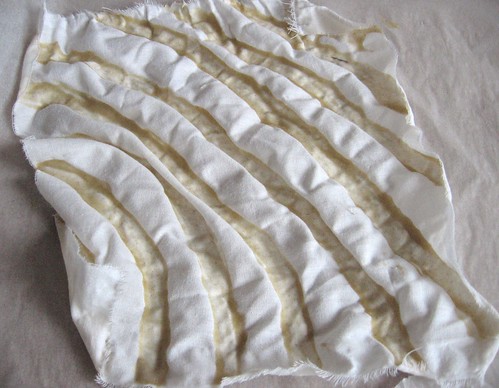
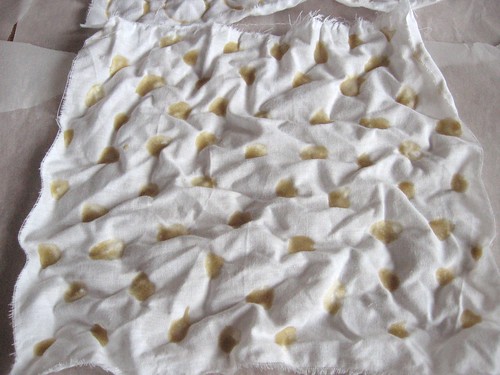
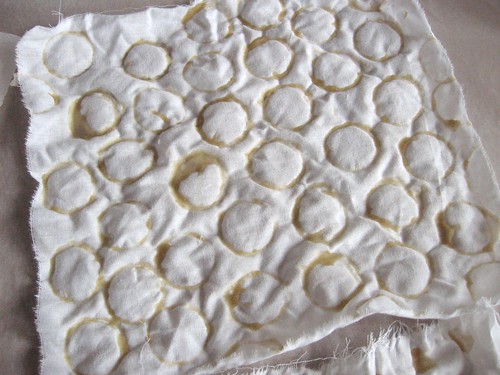
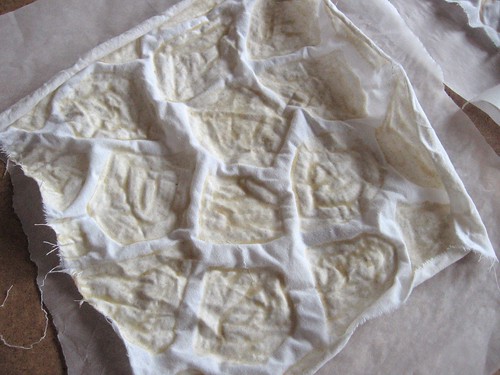
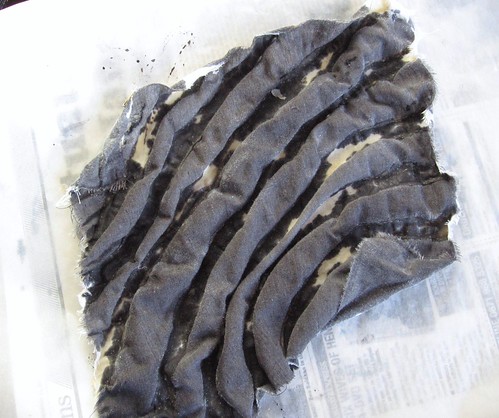
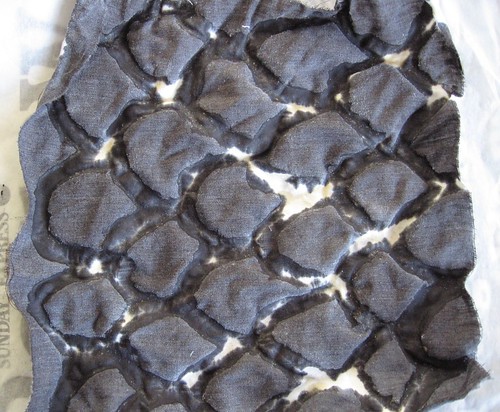
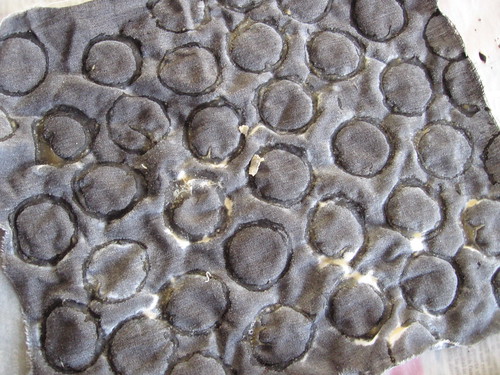
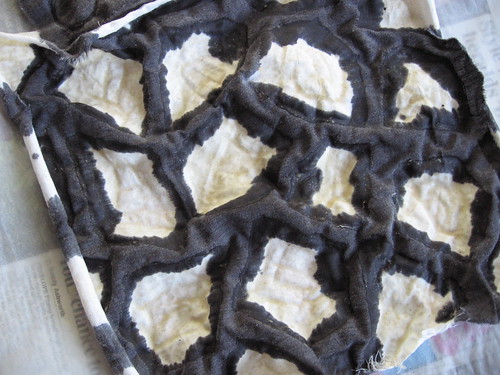
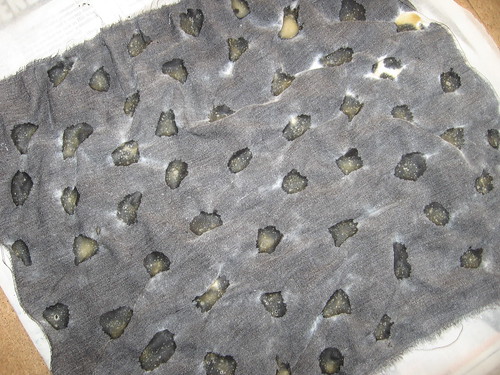
A place to log my C&G L3 Certificate in Embroidery work for official assessment























As my dying of fabrics didn’t produce striking results I thought I’d try bleach painted on black polyester fabric. Although it turned the fabric brown the contrast with the black is still quite striking. I found the slow reveal of the pattern rather fun.
(Refer to safety notes on bleach here)
Image 1:
Image 2:
Image 3:
Image 4:
Image 5:
Image 6:
Image 7:
Image 8:
Image 9:
I’m afraid I can’t say my attempts at Shibori dying went particularly well but here are the outcomes anyway!
Tie Die
Image 1: Here I scrunched up the fabric and affixed bulldog clips at various points:
Image 2: Here I scrunched the fabric into a ball and added lots of elastic bands
Image 3: As with the one above I scrunched up the fabric and tied elastic bands
Image 4: I created little ‘bubbles’ of fabric and tied them tightly with string
Tritik Shibori
Image 5: The fabric was gathered in a radiating pattern
Image 6: The stitches were parallel and when pulled tight the fabric concertinaed
Image 7: Stitches over the fabric were random and pulled tight to cause a really ruched effect. I dabbed the paint on instead of submerging it into a dye bath

Resist
I wanted to try a resist technique using a flour-water paste. I mixed the flour and water until it was very gloopy and then painted it onto the fabric. I had to let the paste dry thoroughly. Then I added dye to the fabric with a paintbrush. After it was washed the colour faded considerably to grey. Whilst the results aren’t full of contrast I like the subtlety of the colouring. Image 10 is my favourite of the entire bunch.
Image 8: The paste was painted in stripes

Image 9: The paste was painted in hoops
Image 10: The paste was painted in a fish-scale pattern
What could I do better next time?
That’s an easy question – I won’t dilute the dye powder so much! Also leave any fabric in the dye bath for longer – I’m quite impatient sometimes! I would also like to use wax as a resist (but I’ll have to find a melting pot first!). Of everything I enjoyed the resist work the most. I don’t know why I didn’t feel excited by the Shibori methods, I guess we can’t like everything!